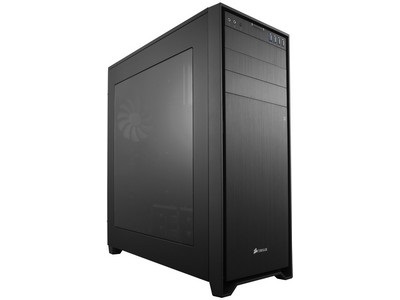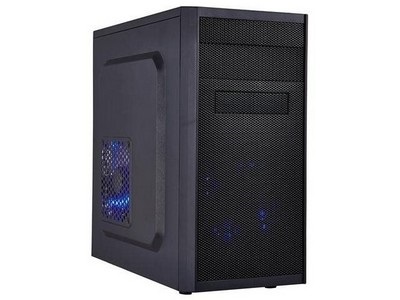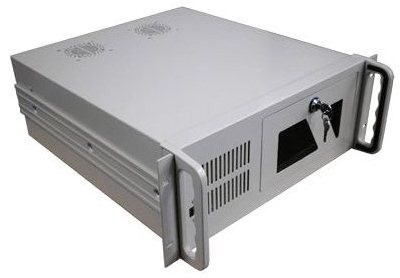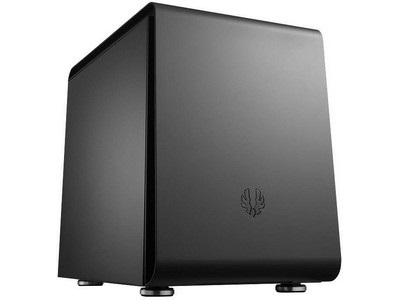How to Choose a PC Case
A computer case, or cabinet, is one of the essential parts of a PC assembly and defines the first impression your computer makes. A good PC case provides convenient access to all components, effectively dissipates heat and does not vibrate. What is important, and what should you watch out for? We will advise you on how to choose the best PC case for your needs.

Full Tower
Full Towers are the largest of the Tower-type cases and offer plenty of room to expand your computer. Thanks to its ability to efficiently dissipate heat, it is suitable for building the most powerful computers. As these are the tallest cases, make sure you measure the space where you plan on putting your new PC.
What is important when choosing a Full Tower?
Purpose of use
Full Tower cases boast the most internal space, provide the best access to components and have multiple cooling options. Full Towers are suitable for building high-performance office and gaming PCs.
Internal layout
External layout
You can also build a strong PC for home and office use with a Mid Tower. You can expand these cases with more powerful components in the future, and they also fit nicely under your desk.
What is important when choosing a Mid Tower?
Purpose of use
Mid Tower cabinets are also spacious enough to build a powerful office or gaming PC. They provide sufficient space for efficient cooling.
Internal layout
External layout
We recommend Mini Tower enclosures for building basic PC setups and office computers that you are not expecting to expand in the future. Due to the reduced cooling options, it is best not to use high-performance components.
What is important when choosing a Mini Tower?
Purpose of use
Mini Towers are not as large as the previous two types of case and do not provide easy access to components. They are ideal for building mid-range office and gaming computers.
Internal layout
External layout
Desktop cases are laid "flat" so that a monitor can be placed on top. This gives you the bonus of freeing up under-desk space while also providing excellent access to controls and connectors at the front and rear.
What is important when choosing a desktop case?
Purpose of use
Desktop cases are typically used to build office and home computers.
Internal arrangement
External layout
Server cases
Server cases serve as a convenient foundation for powerful assemblies. They support ATX motherboards and have many drive bays, so that they can cover any future data requirements. Because of their weight, they are sometimes on wheels.
What is important when choosing a server case?
Hanging vs standing server cases
Dimensions
Door material and type
If you are looking for a case for a small computer, we recommend getting a Mini ITX. Designed for the construction of PC assemblies that do not require high performance, they're so compact that they fit into the smallest of spaces. As the name suggests, you can only use Mini ITX motherboards with this cabinet.
What is important when choosing a Mini ITX?
Purpose of use
Mini ITX PC cabinets are used to build space-saving computers, typically in small offices. Their size is ideal for less demanding components.
Internal layout
External layout
In our step-by-step guide, we'll show you how to build your own PC in 8 steps, and what you need to do it.
FAQs
What should a good PC case have?
A good PC case should be robust and rigid enough to prevent the metal sheets from bending. Sufficient space for components and cooling options are also valuable.
Important Features
What is better? Tool-less installation or nuts and bolts?
You often don't need a screwdriver to install the latest components, as many cabinets come with plastic quick-release mechanisms for installing components. They are easy to use, but the quality does not usually match that of classic screws. For example, over time, there may be a tendency for the places of installation to vibrate and produce considerable noise. If you don't mind a little more effort, good old nuts and bolts will give you better results.
Should I buy a case with or without a power supply?
You can buy computer cases with or without a power supply. Your power source must be sufficient for your assembly. By buying a cabinet with a source, you will avoid looking for it separately. However, if you want to choose the power source yourself, make sure it has enough power. Individual components have different power requirements and gaming computers usually require more.
What is the best position for the external panel?
External panels are for quickly connecting headphones or USB sticks. The following locations are the most common.
What external connectors should the housing have?
The more connectors on the front panel, the easier it is to access your mouse, keyboard, headphones, external drives, and other peripherals.
What is the correct material and thickness of the cabinet?
PC cases are made of steel, aluminium, plastic, and sometimes, other materials. The thickness varies depending on the material used. Steel cabinets are usually 0.6 to 1mm thick while aluminium cases are normally over 1mm thick. Thicker sheets make for more durable but heavier cases. Some more expensive models can be over 2mm thick.
What features do PC cases have?
Some cabinets have front doors or removable sidewalls, which provide easy access to the components inside. Glass sidewalls give you a great view of what is happening inside your machine. If you like to go to LAN parties, look for a case with handles and grips to help you transport it.
Other extra features you may come across:
Is a server case suitable for building a standard PC?
A server is not a regular computer. It is an assembly in which reliability, modularity and easy component replacement are vital. Its focus is different. A server case should be spacious, robust and well-ventilated. The appearance, unlike a conventional computer, is not relevant. A standard computer build may require a more attractive appearance and substantial connectivity opens. So, with all this in mind, we don't recommend using server cases for building standard PCs.
Glossary - PC cabinets
Chassis
The chassis is a frame with holes and slots for all computer components.
ATX
ATX (Advanced Technology Extended) is a motherboard format developed by Intel in 1995. MicroATX and Mini ITX are built on a similar concept to ATX, but they are smaller in size.
Slot
A slot is an interface for connecting processors, expansion cards, graphics cards, specialised modules, etc.
Dictionary of terms





